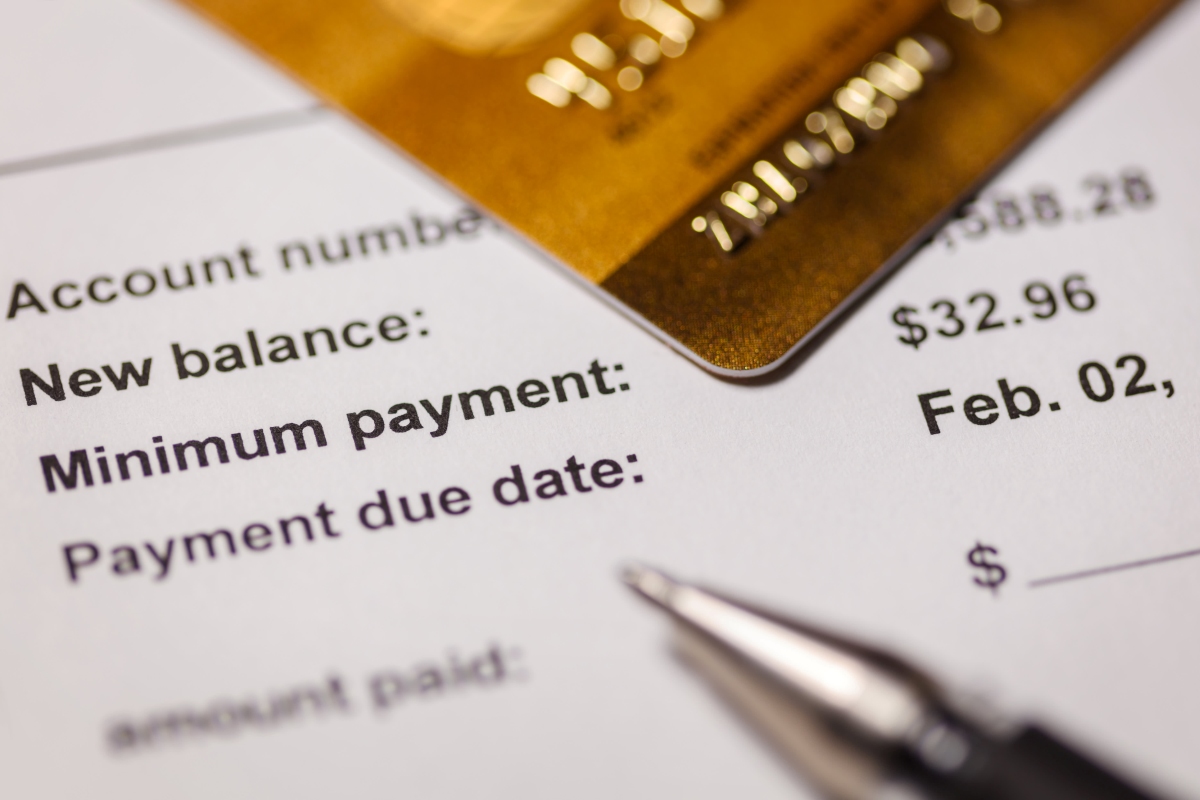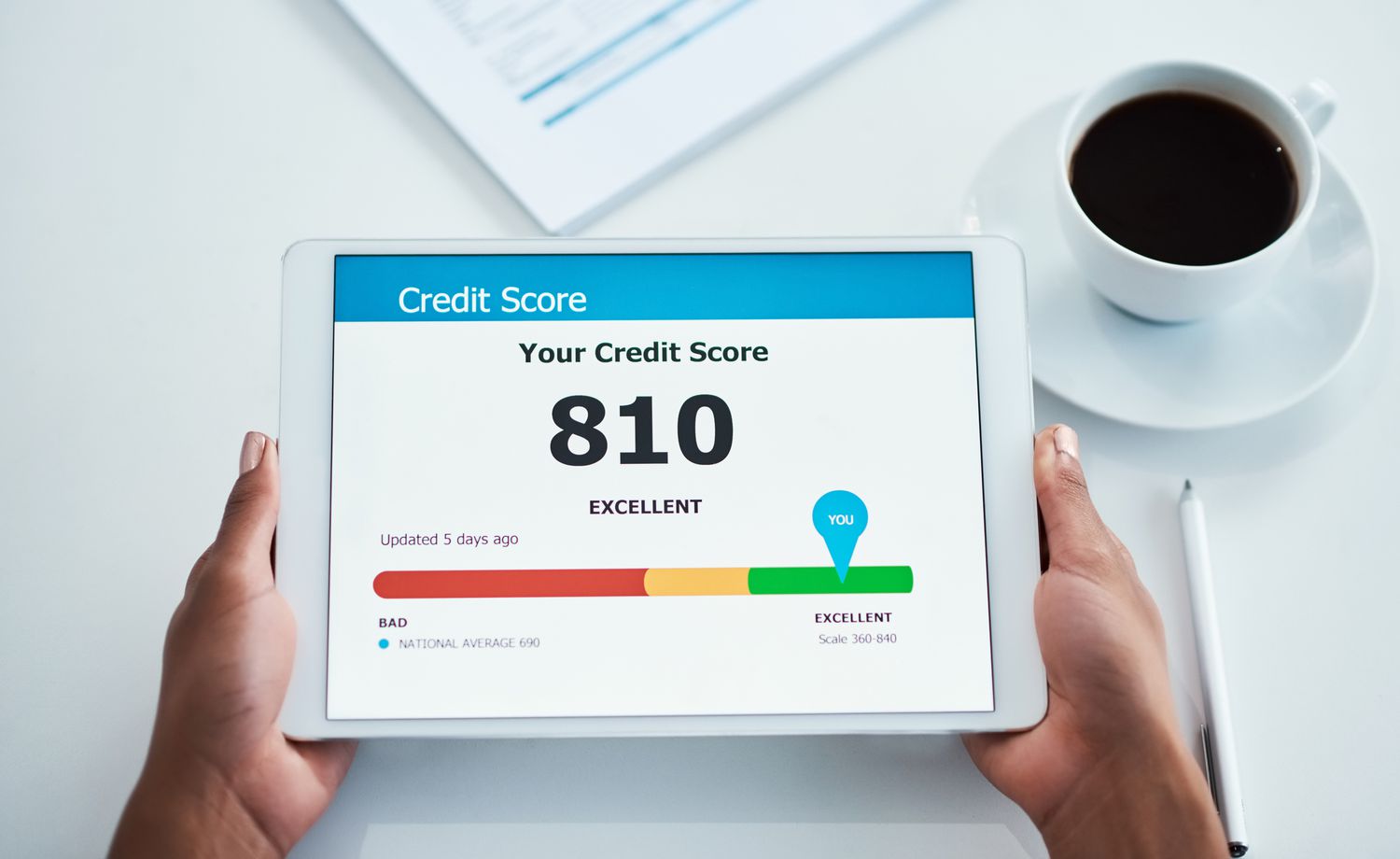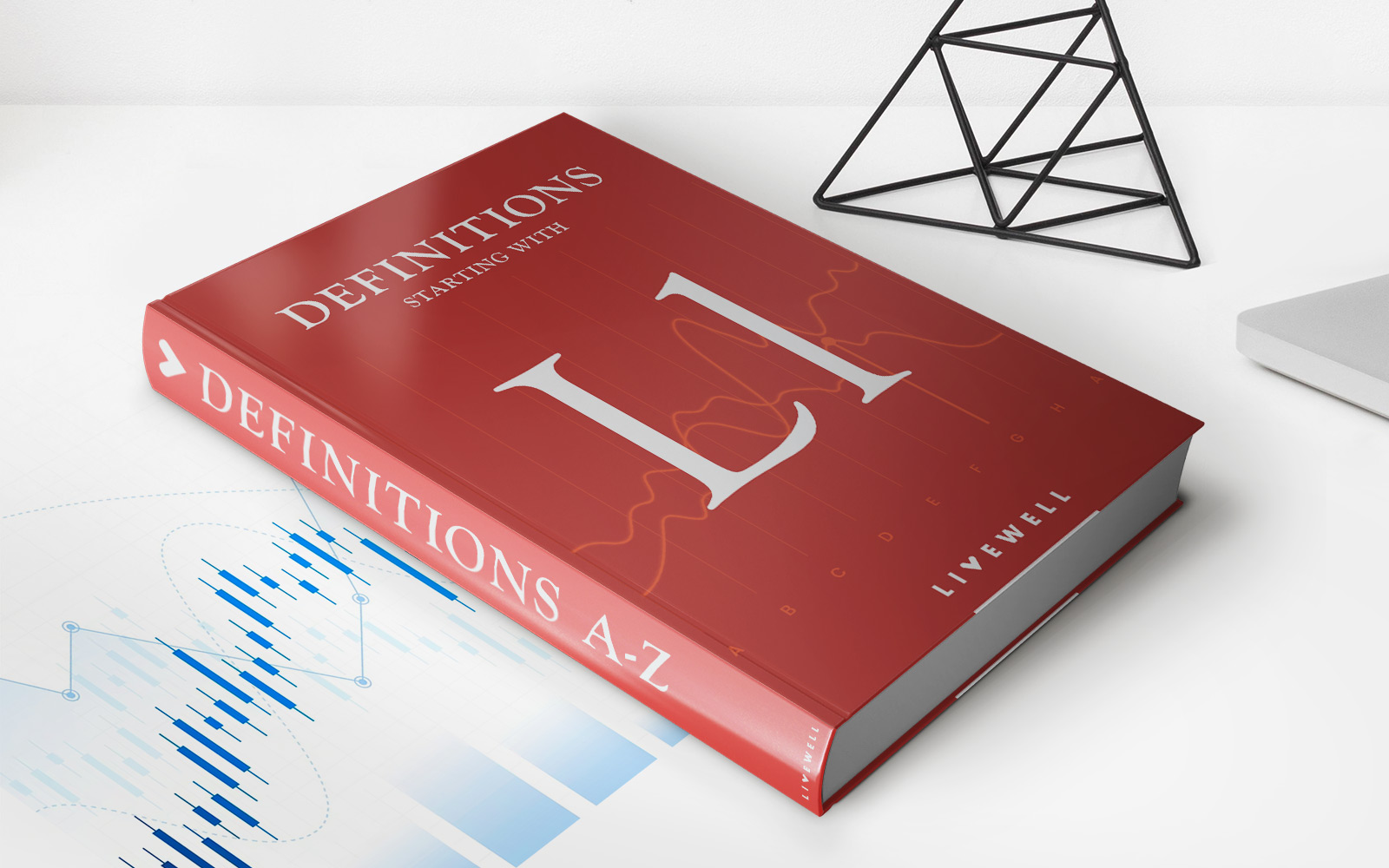Home>Finance>Will Your Minimum Payment Go Down When You Pay Off Your Credit Card


Finance
Will Your Minimum Payment Go Down When You Pay Off Your Credit Card
Published: February 26, 2024
Find out how paying off your credit card affects your minimum payment and learn about the impact on your finances. Get expert advice on finance and credit card management.
(Many of the links in this article redirect to a specific reviewed product. Your purchase of these products through affiliate links helps to generate commission for LiveWell, at no extra cost. Learn more)
Table of Contents
- Understanding the Dynamics of Minimum Payments and Credit Card Debt
- Deciphering the Role of Minimum Payments in Credit Card Debt Management
- Empowering Financial Freedom through Credit Card Debt Elimination
- Unveiling the Ripple Effect: How Paying Off Your Credit Card Influences Minimum Payments
- Navigating the Variables: Understanding the Influential Factors Shaping Minimum Payments
- Navigating the Nexus of Minimum Payments and Debt Freedom
Introduction
Understanding the Dynamics of Minimum Payments and Credit Card Debt
Credit cards have become an integral part of modern financial transactions, offering convenience and flexibility to consumers. However, the ease of swiping a credit card often leads to the accumulation of debt, which can become burdensome due to high-interest rates. One of the key aspects of managing credit card debt is understanding the concept of minimum payments and how they are affected when you make efforts to pay off your credit card balance.
When you carry a balance on your credit card, the issuer typically requires you to make a minimum payment each month. This minimum payment is a small percentage of your total balance, often around 1-3%, and is designed to ensure that you continue to make regular payments. While making the minimum payment helps you avoid late fees and maintain a positive credit history, it can also prolong the time it takes to pay off your debt and result in substantial interest charges.
As you strive to become debt-free, it's crucial to comprehend how your minimum payment may fluctuate when you make additional payments or pay off your credit card entirely. By gaining insight into this dynamic, you can make informed decisions that align with your financial goals and effectively manage your credit card debt. Let's delve deeper into the intricacies of minimum payments and explore how they are impacted when you take steps to eliminate your credit card balance.
Understanding Minimum Payments
Deciphering the Role of Minimum Payments in Credit Card Debt Management
Minimum payments play a pivotal role in the realm of credit card debt management, shaping the dynamics of your financial obligations and influencing the trajectory of your debt repayment journey. These mandatory monthly payments serve as the baseline requirement set by credit card issuers, ensuring that cardholders fulfill their financial obligations and avoid penalties. While the concept of minimum payments may seem straightforward, it is essential to grasp the underlying implications and the interplay between these payments and your overall debt.
At its core, the minimum payment represents the minimum amount you must remit to the credit card company each month to remain in good standing. This sum is typically calculated as a small percentage of your total outstanding balance, often ranging from 1% to 3%, accompanied by a minimum dollar amount. While meeting this obligation safeguards you from incurring late fees and derogatory marks on your credit report, it is important to recognize that making only the minimum payment can lead to prolonged indebtedness and substantial interest accrual.
By comprehending the mechanics of minimum payments, you can gain clarity on how they contribute to the overall cost of your debt. When you make only the minimum payment, a significant portion of your remittance goes towards servicing the interest, with a smaller fraction chipping away at the principal balance. This perpetuates the cycle of debt, prolonging the duration required to eliminate the outstanding balance and resulting in heightened interest expenses over time.
Moreover, understanding the nuances of minimum payments empowers you to make informed decisions about your debt repayment strategy. By recognizing the implications of solely meeting the minimum requirement, you can proactively explore avenues to expedite your debt payoff, such as allocating additional funds towards your credit card balance or leveraging debt consolidation options to streamline your repayment process.
As you navigate the terrain of credit card debt management, a comprehensive understanding of minimum payments serves as a cornerstone for informed financial decision-making, enabling you to chart a path towards financial freedom and fiscal well-being.
Paying Off Your Credit Card
Empowering Financial Freedom through Credit Card Debt Elimination
Embarking on the journey to pay off your credit card signifies a proactive step towards financial liberation and enhanced monetary well-being. As you endeavor to eliminate your credit card balance, it is imperative to adopt a strategic approach that aligns with your financial capacity and long-term objectives. Whether you opt for incremental payments or devise a structured payoff plan, the act of reducing and ultimately eradicating your credit card debt holds profound implications for your financial landscape.
When you make concerted efforts to pay off your credit card, you are not only alleviating the burden of high-interest debt but also regaining control over your financial resources. By chipping away at your outstanding balance, you mitigate the impact of accruing interest, thereby curbing the long-term cost of your debt. Moreover, as you progress towards debt freedom, you free up financial bandwidth, enabling you to allocate resources towards savings, investments, or other pivotal financial goals.
While the process of paying off your credit card demands discipline and perseverance, it also presents an opportunity for financial introspection and recalibration. As you navigate this trajectory, consider evaluating your spending habits, identifying areas for prudent financial management, and cultivating a proactive approach towards fiscal stewardship. This transformative journey not only liberates you from the shackles of debt but also instills a sense of financial empowerment and resilience.
Moreover, as you strive to pay off your credit card, consider exploring potential avenues for accelerating your debt payoff. Whether it involves redirecting windfalls, such as tax refunds or bonuses, towards your credit card balance or leveraging balance transfer options to consolidate and streamline your debt, proactive measures can expedite your path to debt freedom and minimize interest expenses.
By embarking on the quest to pay off your credit card, you set in motion a transformative process that transcends mere financial transactions, encompassing a journey of empowerment, resilience, and informed financial decision-making. As you navigate this trajectory, seize the opportunity to cultivate a harmonious relationship with your finances, fostering a future characterized by financial freedom and abundance.
Impact on Minimum Payment
Unveiling the Ripple Effect: How Paying Off Your Credit Card Influences Minimum Payments
As you embark on the transformative journey of paying off your credit card, it is essential to grasp the nuanced interplay between your debt reduction efforts and the subsequent impact on your minimum payment obligations. The act of reducing and ultimately extinguishing your credit card balance triggers a ripple effect that permeates the realm of minimum payments, reshaping the dynamics of your financial obligations and paving the way for a recalibrated debt management landscape.
Upon successfully paying off a substantial portion of your credit card balance or clearing the debt entirely, you are poised to witness a tangible shift in your minimum payment requirements. The reduction in your outstanding balance serves as a catalyst for recalibrating the minimum payment calculation, potentially resulting in a lower minimum payment obligation. This adjustment is underpinned by the revised baseline established by the diminished balance, thereby aligning your minimum payment with the reduced outstanding debt.
Furthermore, the impact of paying off your credit card extends beyond the immediate recalibration of minimum payments. As you eliminate or significantly reduce your debt burden, you mitigate the compounding effect of interest on your outstanding balance, thereby curbing the incremental growth of your debt. This, in turn, contributes to a more favorable debt-to-income ratio, bolstering your financial profile and positioning you for enhanced financial stability and flexibility.
It is important to note that while paying off your credit card may lead to a decrease in your minimum payment, this should not be misconstrued as an invitation to revert to minimum payments or slacken in your debt repayment endeavors. Instead, view this as an opportunity to leverage the recalibrated minimum payment as a springboard for expedited debt payoff, channeling the financial resources that would have been allocated to a higher minimum payment towards accelerating your journey to debt freedom.
As you navigate the aftermath of paying off your credit card, remain attuned to the evolving landscape of minimum payments, leveraging this shift as a catalyst for sustained financial progress and prudent debt management. By embracing this recalibration as an impetus for accelerated debt reduction, you chart a course towards financial liberation and empowered fiscal stewardship, transcending the confines of indebtedness and embracing a future characterized by financial resilience and abundance.
Factors Affecting Minimum Payment
Navigating the Variables: Understanding the Influential Factors Shaping Minimum Payments
The calculation of minimum payments on credit cards is influenced by a myriad of variables, each playing a distinct role in determining the baseline obligation that cardholders must fulfill. By unraveling the intricate factors that underpin minimum payment calculations, individuals can gain comprehensive insight into the dynamics shaping their financial responsibilities and make informed decisions regarding debt management and repayment strategies.
1. Outstanding Balance: The most prominent determinant of minimum payments is the outstanding balance on the credit card. Typically calculated as a percentage of the total balance, the minimum payment serves as a baseline requirement, ensuring that cardholders remit a proportional amount towards their debt servicing obligations. As the outstanding balance fluctuates, so does the minimum payment, reflecting the evolving financial commitment linked to the accrued debt.
2. Interest Rate: The interest rate levied on the credit card balance exerts a substantial influence on the minimum payment calculation. Higher interest rates translate to elevated interest charges, thereby amplifying the minimum payment required to cover the accruing interest and contribute towards reducing the principal balance. Consequently, individuals carrying balances with higher interest rates are confronted with augmented minimum payment obligations, underscoring the pivotal role of interest rates in shaping debt servicing requirements.
3. Minimum Payment Formulation: Credit card issuers employ diverse methodologies to compute minimum payments, encompassing a percentage-based approach, a flat dollar amount, or a combination of both. Understanding the specific formulation utilized by the issuer is crucial, as it delineates the fundamental framework governing the minimum payment calculation and elucidates the variables that contribute to this financial obligation.
4. Regulatory Guidelines: Regulatory mandates and industry standards also wield influence over minimum payment requirements, with governing bodies stipulating guidelines to safeguard consumers from onerous debt burdens. These regulations may prescribe minimum payment thresholds or delineate parameters for transparent disclosure of minimum payment calculations, fostering consumer protection and financial transparency.
5. Financial Hardship Programs: In instances of financial distress or hardship, credit card issuers may offer hardship programs that modify minimum payment obligations to accommodate the cardholder’s financial constraints. These programs, often tailored to mitigate the impact of unforeseen economic challenges, exemplify the adaptability of minimum payment requirements in response to varying financial circumstances.
By comprehending the multifaceted factors influencing minimum payments, individuals can navigate the terrain of credit card debt management with astuteness and acumen, leveraging this insight to craft tailored repayment strategies, mitigate interest expenses, and embark on a trajectory towards debt freedom and financial empowerment.
Conclusion
Navigating the Nexus of Minimum Payments and Debt Freedom
As we traverse the intricate landscape of credit card debt management, the dynamics of minimum payments emerge as a pivotal focal point, shaping the contours of our financial responsibilities and influencing the trajectory of our debt repayment endeavors. Understanding the symbiotic relationship between paying off your credit card and the subsequent impact on minimum payments unveils a nuanced interplay that holds profound implications for our financial well-being and debt liberation.
Upon embarking on the transformative journey to pay off your credit card, the recalibration of minimum payments heralds a tangible shift in your debt management landscape. The reduction or eradication of your outstanding balance precipitates a corresponding adjustment in your minimum payment obligations, potentially affording you a lower baseline requirement. This recalibration not only reflects the diminished debt burden but also presents an opportunity to harness this shift as a catalyst for accelerated debt payoff, steering you towards financial liberation and fiscal resilience.
Furthermore, as we unravel the influential factors shaping minimum payments, we gain comprehensive insight into the variables underpinning our financial obligations. From the outstanding balance and interest rates to regulatory guidelines and hardship programs, these factors collectively delineate the contours of our minimum payment requirements, empowering us to navigate the terrain of debt management with sagacity and foresight.
As we conclude this exploration, it is imperative to underscore the transformative potential inherent in the recalibration of minimum payments. This shift not only reflects the evolving landscape of our debt obligations but also signifies a juncture where proactive debt reduction measures can be harnessed to propel us towards financial freedom and abundance. By leveraging this recalibration as a springboard for accelerated debt payoff and prudent financial stewardship, we chart a course towards a future characterized by fiscal resilience, empowered decision-making, and the attainment of enduring financial well-being.
In essence, the convergence of minimum payments and debt freedom encapsulates a narrative of empowerment, resilience, and informed financial decision-making. As we navigate this intersection, let us embrace the recalibration of minimum payments as a beacon illuminating the path to debt liberation and embark on a journey underpinned by financial empowerment, abundance, and enduring fiscal well-being.














